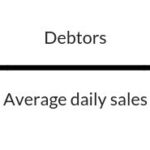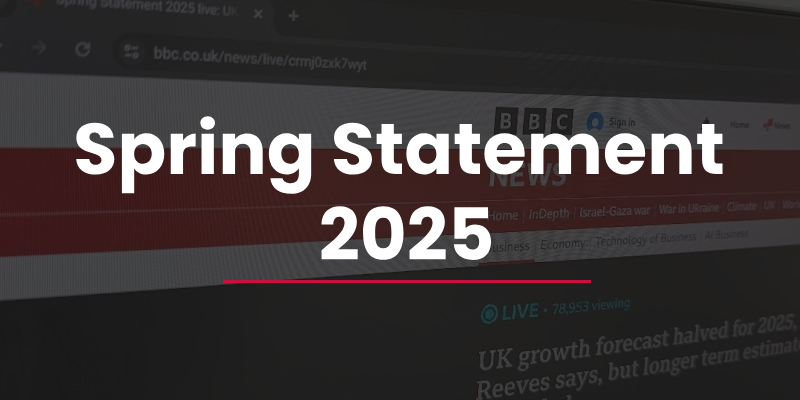The small business guide to chasing debt

On average how many days is it taking you to get paid by your customers?
The longer your payment days are the more you are acting as a bank for customers.
Reducing payment days improves cash flow and reduces interest costs.
Lets jump in and look at some tactics for getting paid.
[yellowbox]Exclusive: This post is an extract from our 7 step business health check ebook.
Download the full book here for free simply enter your name and email and get it delivered straight to your inbox.[/yellowbox]
How do you calculate your payment days?
If you don’t know the term, “debtors” in your business is the money you are owed from customers.
You calculate your debtor days by dividing your debtor value by your average daily sales.

For example: Annual sales 200,000 and year end debtors 20,000 then
Debtors Days = 20,000 / (200,000 / 365) = 36.5 days
It takes this business on average 36.5 days to collect debts from customers.
What’s a good number for payment days?
The least amount possible! 😂
No really that is our answer, regardless of industry average, your average or somebody else’s average wherever possible you should be trying to keep this number as low as possible.
The lower it is, the less debt you have to chase in at any point, the less legal proceedings you will need to enter into for non payers, the better your cash flow will be, the less interest you will incur on un-needed borrowings and much more.
Even in situations where your hands are tied like working for bigger companies with strict payment terms there are still ways to squeeze that time down.
Tips for avoiding and chasing debt
Q:Whats a good number for payment days?
A: The least amount possible!
Customer payment days
Think of customers owing you money as a loan.
This is an interest-free loan and it can leave you in a position unable to purchase what you need.
The majority of business failures are to do with cash flow problems.
As with many things in life, having a plan or a strategy in place can save you getting into a mess.
Once you’ve formulated a strategy on customer credit, make this your policy and most importantly articulate this with your team.
Focus on what you can control
If a customer isn’t paying on time you can’t realistically storm their office and demand your money (send the boys round!)
There are however things that you can control that can help ensure you get paid faster.
Invoice as soon as you can, clearly set out the terms of payment and have a process in place so customers are reminded when it looks like they might not pay on time.
Only give credit to the right person
Try to assess the customer’s ability and their willingness to pay.
Especially if the amount is substantial.
If you are worried try to work out a milestone or deposit based approach.
When dealing with a company consider whether a personal guarantee from a director may be a suitable approach.
Embrace tech
Online products such as Gocardless and Stripe allow you to take instant payment (give us a shout if you want a hand getting these integrated).
So think about embracing those kinds of tech as many customers (possibly all) prefer the quicker process. With stripe integrated with xero invoices your customer can pay by card in less than a minute.
That’s much easier than logging into a bank, getting past security and finally bumbling on with setting up a BACs payment!
If you are using payment terms, your bookkeeping software can send out automatic reminders, statements and so on. If the amount is repeating you can have online bookkeeping software like Xero automatically raise the invoice, email it to the customer and reconcile the direct debit payment from Gocardless against the invoice. You don’t lift a finger!
Xero is a fantastic platform for doing exactly this, you can read more about it here.
Be nice 😘
Studies show politeness in the invoice terms and the dealings with the customer will increase the average speed of payment.
Also it’s not a bad thing to do regardless of its effect on payment days 😁
Send your invoice to the right person
Quite an obvious one ey!
Make sure its going to the right person, the right company, to somebody who can actually pay etc.
Don’t assume a bill is being deliberately left unpaid before checking they have received it in the first place.
“I never got it” is sometimes the truth!
Late fees and incentives
This isn’t ideal.
Late fees go against the ‘be nice’ point raised and incentives (for early payment) cost you revenue.
It can help speed up payments but only consider if you really have to.
Of course some industrys will have this as standard practice and some customers do expect it when dealing with those industries so if it suits your company and style, go for it.
30 days is a long time
Back in the day, 30-day payment terms were standard.
The process then, however, involved snail-mailing an invoice out which was put in a pile and usually only processed when the pile got to a certain size and could be dealt with at their convenience.
In today’s connected world of emails, online payments and automation, this now seems needlessly long.
Studies are showing over half of businesses are expecting payment either instantly or within 7 days.
Last resort
If you have a customer that just won’t budge there are laws in place to help you. However nobody want to be involved in legal proceedings and you don’t want to waste money on court fees etc. So make sure every other avenue has been exhausted first.
If you do decide to proceed further check out the small claims court process here: https://www.gov.uk/make-court-claim-for-money
There’s also some great advice at citizens advice here: https://www.citizensadvice.org.uk/law-and-courts/legal-system/taking-legal-action/small-claims/making-a-small-claim/
Remember, Don’t be a bank!
[yellowbox]Exclusive: This post is an extract from our 7 step business health check ebook.
Download the full book here for free simply enter your name and email and get it delivered straight to your inbox.[/yellowbox]



